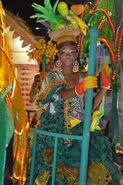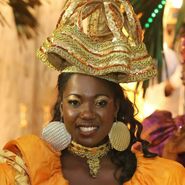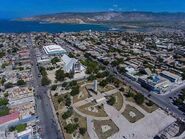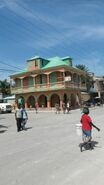"For our country, for our forefathers, united let us March. Pou peyi nou an, pou zansèt nou yo, ini kite nou mas.
Let there be no traitors in our ranks! Se pou pa gen trèt nan ran nou yo!
Let us be masters of our soil. Se pou nou mèt mèt tè nou yo.
United let us march Ansanm se pou nou mache
For our country, for our forefathers." Pou peyi nou an, pou zansèt nou yo.
-Extract from the Haitian national anthem, La Dessalinienne, written by Justin Lhérisson and Nicolas Geffrard in 1904.
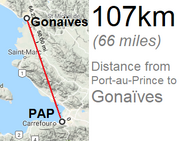
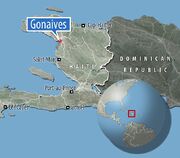
Location in Haiti
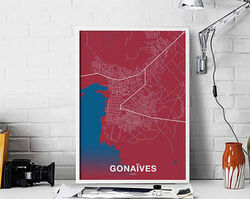
Gonaïves (Kreyol: Gonayiv) is a city in northern Haiti, the capital and most populous city of Artibonite Department and of the Gonaïves Arrondissement. With 356,324 people (as of 2016), Gonaïves is the fifth most populous city nationwide, and the second most populous provincial capital in Haiti.
Due to its strategic position and its participation in the Haitian Revolution, the city is recognized as the "Cradle of Independence". On January 1st, government authorities hold a parade to commemorate the day of independence. The population, estimated at about 400,000 inhabitants, makes it third most popular city in the country, behind Cap-Haïtien and Port-au-Prince. It is sometimes known as Haiti's "Independence city" because it was where Jean-Jacques Dessalines proclaimed Haiti's independence on January 1,1804.
The strategic location of Gonaïves also benefits the regional network. Serving as a crossroads, it offers convenient access to major cities like Port-au-Prince, Cap-Haïtien, Port-de-Paix, and Hinche through Saint-Michel. Additionally, it is situated near one of the country's key agricultural centers. However, the city faces significant risks due to its placement at the mouth of a deteriorating watershed and its location on the coastal edge of a low plain with saline-rich soil. Consequently, the entire city is considered a highly vulnerable area. Despite facing numerous challenges over the years, Gonaïves has demonstrated resilience. Located 110 kilometers (70 miles) north of the national capital of Port-au-Prince, Gonaives is an agricultural municipality with a sector that produces commodities like cotton, sugar, coffee, mango, banana and cabinet wood.
About[]
Gonaïves is the anchor of the Gonaïves metropolitan area, which in turn is a part of the Artibonite River Valley. The metropolitan area is the 2nd largest by population in Haiti, with approximately 452,704 people as of 2010. In addition, Gonaïves is the seat of Gonaïves Arrondissement and, at 574 square kilometers (222 square miles), it is the second-largest municipality in the department after Saint-Marc, and one of the largest communes in Haiti.
Settled in 1422 as an agricultural community near the mouth of the La Quinte River, Gonaïves incorporated as a city in 1738. Situated on a natural harbor, Gonaïves became the capital of Artibonite Department, as well as the commercial hub and port of the fertile Artibonite Plain. Located in the northwestern reaches of the Gulf Coast, Gonaïves has a local steppe climate, characterized by a semi-arid, grassy plain receiving 25-50 cm (10-20 inches) of rain each year. Despite this, its agricultural sector led to a thriving farming community, many of the original crops remaining important parts of the Gonaïves economy for decades, such as spinach, corn, rice, bananas & plantains, papayas, onions, and shallots. These industries remained the driving forces of the city, making Gonaïves' hot summers more bearable.
History[]
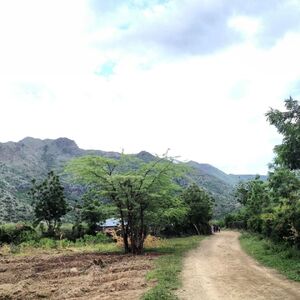
A Rural section of Gonaïves
Early History[]
The city of Gonaïves was founded in 1422 by Indians who named it Gonaibo under the Kingdom of Jaragua. This historical city is where Dessalines declared Haiti's Independence on January 1, 1804, and a century later, on January 1, 1904, it hosted the centenary celebration of Independence.
The city was established as a parish in 1738 and a church dedicated to Saint-Charles and Saint-Mathurin was built in 1740. By 1744, Gonaïves had around 50 houses. In 1770, it became a more developed area with a church, rectory, public square, cemetery, and local guard. By the eve of the Revolution of 1771, Gonaïves had a population of about 10,700 people, including 940 white individuals, 750 freedmen, and 9,000 slaves.
• In August 1792, the Spaniards, seeking to expand their influence in the Caribbean, seized control of the strategic port city of Gonaïves. This move was part of their broader efforts to counter the growing power of the French in the region. During this time, Toussaint Louverture made the decision to align himself with the Spanish forces. Louverture, a former slave who had risen to become a respected military leader, saw an opportunity to further his cause by joining forces with the Spaniards. He believed that they would support his goal of emancipating the enslaved population of Saint-Domingue (as Haiti was then known) and establishing a free society.
Louverture's decision to join the Spanish camp was a significant turning point in the Haitian Revolution. His military prowess and leadership skills were highly valued by the Spanish, and he quickly rose through the ranks. Under his command, the Spanish forces achieved several victories against the French, further weakening their hold on the island. However, when France abolished slavery in 1794, Louverture reconsidered his position and decided to align himself with the French once again. He recognized that aligning with the French would provide him with a stronger position to negotiate for the rights and autonomy of the formerly enslaved population. With Louverture's support, the French were able to regain control over Gonaïves and other strategic locations in Haiti. However, this alliance was short-lived, as Louverture eventually broke away from the French and declared himself Governor-General of Saint-Domingue in 1801.
Despite Cap-Haïtien's significance as the main city and capital of the colony, Toussaint opted for Gonaïves as his strategic retreat location for his army; it served as a central point for communication and coordination with other leaders and factions within the colony. From Gonaïves, he departed in various instances to carry out important missions, such as rescuing Governor Laveaux imprisoned at Au Cap by supporters of mulatto General Vilatte 1796, expelling Commissioner Sonthonax from the colony in 1797, removing French General Hédouville in 1798, and engaging in battle against his rival, General André Rigaud, in the South in 1800.
19th Century[]
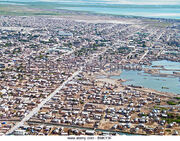
Aerial view of Gonaives, Haiti
• In February 1802, General Rochambeau led French troops in an attempt to seize control of the city, which was defended by Haitian Commander Vernet. Upon learning of the approaching French troops, General Toussaint Louverture swiftly positioned his own troops at Ravine-à-Couleuvres, near the town of LaCroix Perisse, just a few miles away from Gonaïves. He bravely fought against the French army, resulting in a brutal and prolonged conflict. Toussaint successfully prevented the French army from entering Gonaïves, buying enough time for General Vernet to ignite the city before retreating with his troops to another strategic location. This battle became known as the Snake Gully Battle or Battle of Ravine-à-Couleuvres.
• On June 6, 1802, a tragic event occurred in Gonaïves, marking a dark chapter in Haitian history. Toussaint Louverture was apprehended at the Georges Plantation and escorted through the town to the ship Le Creole bound for Cap-Haïtien, where his family awaited him. Subsequently, he set sail on the vessel Le Hero destined for France.
The second phase of the War of Independence commenced. After evading an ambush in Petite Rivière de l'Artibonite on October 23, 1802, Dessalines seized the fortress La Crête-à-Pierrot and united with General Vernet, Colonel Gabart, and rebels Comus and John Labarrière in Gonaïves. Together, they strategized their upcoming attack on the French forces.
• On January 1st 1804, Jean-Jacques Dessalines, along with his generals and the indigenous army, proclaimed Haiti’s independence from France at the Gonaïves' Place d’Armes. The Act of Independence, written by Boisrond Tonnerre, was read during this historic event, marking the birth of the First Free Black Nation in the world. As a result, Gonaïves was bestowed with the title, The Birthplace of Haiti's Independence.
According to Semexant Rouzier's 1891 Gazetteer of Haiti, the Act of Independence was written and signed on Vernet's property in Gonaïves.
Marie-Claire Heureuse Félicité, the 1st First Lady of Haiti and widow of Emperor Jean-Jacques Dessalines, passed away in Gonaïves on August 8, 1858. Her tombstone can be found in the cemetery on Rue Vernet, near Rue Lamatiniere.
• The 1858 uprising in Gonaïves marked a significant event in the city's tumultuous history. A group of revolutionaries, including Joseph Lamothe, Fenelon Geffrard, Legros (senior), E. Magny, Aimé Legros, and Normil Sambour, formed a committee to combat Faustin Soulouque's dictatorship and restore the Republic. In response to their call, General Fabre Geffrard, the Army Chief of Staff, arrived in Gonaïves on December 20. Two days later, the revolution was officially declared, gaining support from the Artibonite Department and the entire Northern Haiti. After three weeks, the Republic was restored, and Geffrard became the president, with the Constitution of 1846 reinstated. Soulouque attempted to suppress the rebellion but failed, and on January 15, Geffrard triumphantly entered the capital.
• In 1879, Gonaïves experienced a series of significant events. Firstly, on February 7, Mont Morency Benjamin made an unsuccessful attempt to seize control of the city, but the population managed to drive him away. Then, on July 3, General Hériston Hérissé rebelled against Boisrond Canal, who was already grappling with a complex political crisis. Canal eventually resigned. Lastly, in early August, the Bazelaisiste Liberals, who had been defeated in Port-au-Prince, sought refuge in Gonaïves, hoping for support from their allies. However, General Jean Jumeau and Hérissé, acting on orders from the provisional government, successfully expelled the Liberals from the city, resulting in the burning of Gonaïves.
• On October 2, 1888, Hippolyte arrived in Gonaïves in a German boat, and the city cheerfully welcomed him. This marked the beginning of a new era for Haiti, as Gonaïves played a crucial role in the establishment of the new northern state and the resistance against the West. On November 13, Gonaïves hosted dissidents who opposed the decisions of the Constituent Assembly and the election of Légitime, leading to the proclamation of the Constitution of 1888. The civil war concluded in 1889 with the victory of the North, and Gonaïves was chosen as the location for the Constituent Assembly, responsible for drafting the Constitution of 1889.
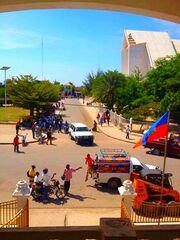
Gonaives
20th Century
• On September 2, 1902 after the Haitian rebel ship Crête-à-Pierrot hijacked the German steamer Markomannia in the Port of Cap-Haïtien and seized weapons destined for the Haitian government of Nord Alexis; Offended, Germany sent their warship The Panther to Haiti. The Panther found the rebel ship, La Crête-à-Pierrot, in Gonaïves. Richard Eckermann, the German commander of The Panther, ordered La Crête-a-Pierrot to surrender, but in a heroic and patriotic act, Admiral Hamerton Killick, commander of the Haitian warship La Crête-à-Pierrot, evacuated his crew and blew up the Crête-à-Pierrot instead of surrounding it to the German warship The Panther.
• In 1904, the Musée du Centenaire (Mémorial de l’Indépedance) was inaugurated in Gonaïves to commemorate the nation’s first century of independence.
• Throughout the American occupation of Haiti, the city bore witness to a significant presence of nationalists on its land. Among them were Raymond Cabêche, who served as a representative (deputy) for Pilate in 1915. In a bold act of patriotism, he threw official insignia on the floor of the House following the vote of the Haïtian-American Convention. Dr. Justin Latortue, the Mayor of Gonaïves in 1921, also displayed his strong nationalist sentiments. He was among the 11 senators elected in 1930 who opposed the "Grand Corps", but unfortunately, their fate was sealed by a coup d'etat led by President Vincent in 1935.
• Gonaïves witnessed a revival in political activity mainly after 1946. The uprising that brought down Elie Lescot on January 11 gained momentum in Gonaïves, with Dr. Justin Latortue playing a key role.
• In 1950, the clergy and bourgeoisie played a significant role in supporting Colonel Paul Magloire to run for president. As a gesture of gratitude, Magloire showed love to Gonaïves by letting them host the Constitutional Convention of 1950. When Magloire fell in 1956, the people of Gonaïves, still loyal to the memory, were charmed by the "NOIRISTE" speech and welcomed François Duvalier with open arms. That's where Duvalier built his stronghold.
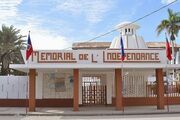
Gonaïves : the "Independence City"
• In 1961/62, a furious mob went wild and took down a macoute called Big Fefe for offing Emmanuel Jules Denis, a Gonaïvien from Raboteau.
• In 1972, Gonaïves was the scene of the first dechoucage, where the Delva brothers, Prophet and Zacharie, had their residences ransacked and looted.
• Gonaïves, once again, became the birthplace of the movement to topple the Duvalier dictatorship. The uprising, which took place from May 21 to 24, 1984, sparked the flames of change. Then, in November 1985, Gonaïves witnessed the culmination of the anti-Duvalier rebellion, which soon spread to other cities.
• During an anti-government protest in Gonaïves on Thursday, November 28, 1985, three teenagers named Jean Robert Cius, Mackenson Michel, and Daniel Israel were fatally shot by the armed forces loyal to Duvalier. These brave individuals have since been hailed as the three martyrs who fought for dignity and freedom. The tragic loss of these young students only fueled the flames of rebellion, leading to widespread looting and the ransacking of government buildings not only in Gonaïves but also in other cities. This relentless uprising persisted until the eventual departure of Jean-Claude Duvalier on February 7, 1986.
• On April 22, 1994, in the midst of the military dictatorship that took control following a coup against Jean-Bertrand Aristide, a horde of Aristide loyalists were brutally assaulted and slain by a combination of ordinary citizens and paramilitary troops in Raboteau, a densely populated district of the city (including the Front for Progress and Progress of Haiti, FRAPH).

21st Century[]
• In the early 2000s, Gonaïves experienced significant unrest and violence, primarily driven by opposition to President Jean-Bertrand Aristide. The city became a focal point of rebellion on September 21, 2003, following the assassination of rebel leader Amiot Métayer by the ruling regime. This rebellion gained momentum as an armed opposition, led by Buteur Métayer, Amiot's own brother, formed the Front for Liberation and National Reconstruction. Ultimately, these events led to the departure of President Jean-Bertrand Aristide on February 29, 2004. Additionally, on February 5, 2004, a group known as the Revolutionary Artibonite Resistance Front took control of the city, sparking the 2004 Haitian rebellion that resulted in Aristide's ousting. Due to these two successful uprisings originating or gaining traction in Gonaïves, the city has earned nicknames such as the City of Freedom, City of the Braves, or City of Resistance.
• On September 18, 2004, the City of Independence in Haiti faced its most devastating moment. A cyclone swept through the region, causing immense destruction and loss. The impact of Tropical Storm Jeanne was catastrophic, resulting in the loss of around 2,000 lives and triggering destructive floods and mudslides in Gonaïves. Hurricane Jeanne left the city in ruins, with over 80% of houses destroyed and countless Haitian families grieving their loved ones. The scale of the losses incurred by the city is immeasurable and overwhelming.
• In September 2008, four years later, the city experienced another round of destruction caused by a succession of storms, particularly Hurricanes Hanna and Ike. These storms resulted in the tragic loss of over 500 lives, with the majority of fatalities occurring in the flooded areas of Gonaïves. The then Mayor of Gonaïves, Stephen Topa Moise, reported that at least 48,000 individuals from the Gonaïves region had to seek refuge in shelters as a result of that disaster.
Flag[]
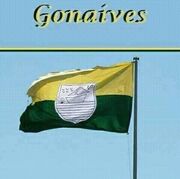
Picture of the Gonaïves Flag
The Gonaïves city flag consists of two horizontal stripes: yellow on top and green on the bottom, with a vertical white band in the center displaying an image of a conch. The green symbolizes the color of rice in the rice fields, while the yellow represents ripe rice. The conch represents sea salt from the Gonaïves region.
Geography[]
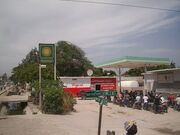
Gonaïves, AR, Haiti
Gonaives is located at 19.4511° N, 72.6802° W. According to the IHSI, this commune has a total land area of 573.58 square kilometers (221.46 square miles), of which 437.69 sq.km (76%) is suburban, 120.80 sq.km (21%) is rural, and 15.09 sq.km (3%) is urban. Gonaïves is the largest commune by land area in the Department, and ranks 5th among the 145 communes of the Republic. It is bordered on the north by city of Gros-Morne, the northeast by the Northern Department towns of Pilate and Plaisance, on the east by Ennery, on the southeast by the town of Saint-Michel, on the south by the city of Dessalines, the southwest by the town of L'Estère, the west by the Gonaïves Bay, and on the northwest by Anse-Rouge and Terre-Neuve. Gonaïves is split into five sections and a district. A city with hot springs located on a salty land overlooking a bay, the port city of Gonaïves is also a crossroads linking Cap-Haïtien, Port-de-Paix, and Hinche via Saint-Michel-de-l'Attalaye. The terrain of the city is dominated by plains. At 13 square kilometers (5 square miles), Downtown Gonaïves has a density 21,579 inhabitants per square kilometer (55,718 per sq. mile).
Demographics
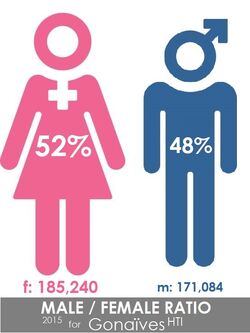
| Year | Population | +/- |
|---|---|---|
| 1771 | 10,700 | |
| 1890 | 18,000 | +68% |
| 1896 | 20,000 | +11% |
| 1982 | 34,209 | +71% |
| 1992 | 63,300 | +81% |
| 1998 | 130,122 | +106% |
| 2003 | 206,426 | +59% |
| 2009 | 228,725 | +11% |
| 2011 | 300,000 | +31% |
| 2015 | 356,324 | +19% |
| GON | Gonaïves | 356,324 | |
|---|---|---|---|
| VGV | Ville des Gonaïves | 278,584 | |
| QPB | Quartier Petite Rivière de Bayonnais | 2,496 | |
| PTM | 1ère Section Pont Tamarin | 17,809 | |
| BSS | 2ème Section Bassin | 11,199 | |
| PRB | 3ème Section Petite Rivière Bayonnais | 20,654 | |
| POX | 4ème Section Poteaux | 14,949 | |
| LAB | 5eme Section Labranle | 10,633 |
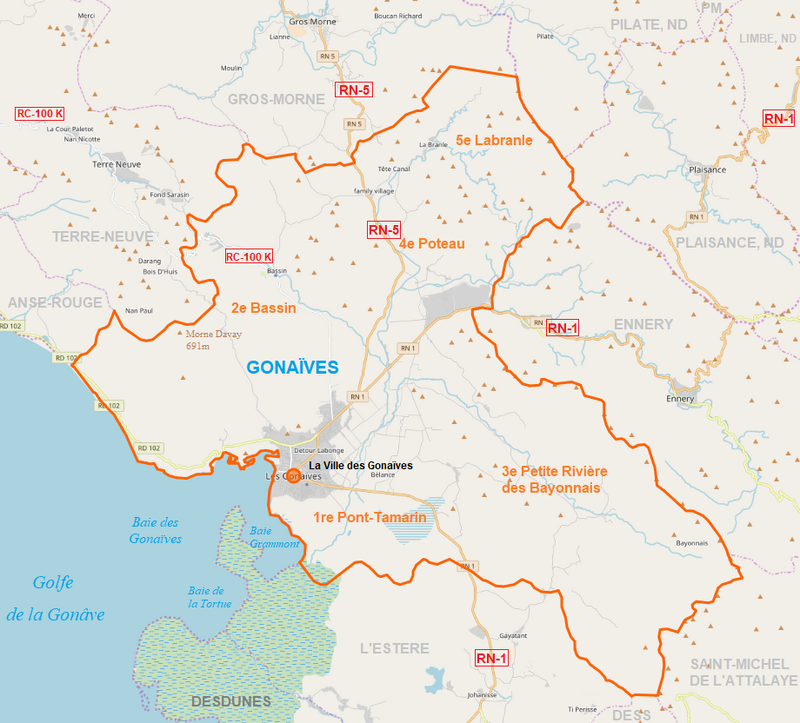
Communal map of Gonaïves, Haiti

Baie de Gonaïves
Gonaïves, located in a valley surrounded by hills and mountains, is prone to hurricanes and floods. Additionally, its proximity to the Caribbean Sea further increases the risk of natural disasters. The town has already experienced the devastating impact of various calamities, like Tropical Storm Jeanne in September 2004, resulting in the tragic loss of over 2,500 lives, and the resulting flooding and mudslides.
The city is regularly plagued by catastrophic floods caused by the La Quinte River, which flows east of Gonaïves. This river receives water from several significant tributaries, including the Bayonnais, Ennery, La Branle, and Head Source rivers. Efforts to rehabilitate this watercourse have been initiated over the years, including dredging, canalization, bank consolidation, and widening of the riverbed.
Furthermore, Gonaïves has endured the impact of three storms - Gustav, Hanna, and Ike. These successive disasters resulted in the loss of 530 lives and affected a total of 50,000 residents. Although Gonaives was not severely affected by the devastating earthquake in 2010, it still faced challenges in dealing with the aftermath. More than 35,000 people sought medical and housing assistance in the city, overwhelming the local hospitals. Moreover, Gonaïves' limited resources hindered its ability to provide aid to everyone, as the city was still recovering from the effects of a previous hurricane.
Climate[]
Gonaïves has a local steppe climate with minimal rainfall throughout the year. The average annual temperature in Gonaïves is 26.4 °C (80°F), with an average rainfall of 536 mm (21 in.).
December sees the least amount of rainfall at 6 mm (0.25 in.), while June experiences the highest precipitation at an average of 95 mm (4 in.).
July usually sees the highest temperatures, averaging around 27.7 °C (82°F), while January is the chilliest month, with temperatures averaging 24.5 °C (76°F).
The difference in rainfall between the driest and wettest months is 89 millimeters (3.5 inches). Temperatures fluctuate by 3.2 degrees Celsius (38 degrees F) over the course of the year.
Economy[]
Gonaïves is the commercial center and port of the fertile Artibonite Plain, with a natural harbor. The local economy is based on agriculture and trade.
The Economic and Financial Infrastructures include nine hotels, twelve restaurants, three banks, five credit unions, and two marketing cooperatives.
Infrastructure[]
Education
The municipality is overseen by a departmental directorate under the Ministry of Education of Youth and Sports. The director is responsible for overseeing all relevant activities. There are a total of 32 public primary schools, along with several private and two congregational schools. In terms of secondary education, there are two public schools, numerous private schools, and three congregational schools. Gonaïves is home to various educational institutions, including the Université Publique de l'Artibonite aux Gonaïves (UPAG) and The Law and Economics School of Gonaïves.
Health
Gonaïves is home to the newly renovated La Providence Hospital. The Ministry of Public Health and Population is overseen by a departmental directorate. In terms of healthcare facilities, there are four health centers without beds, three health centers with beds, and five dispensaries. 23 doctors, a dentist, 26 nurses, 64 auxiliaries, and two laboratory technicians ensure the well-being of the entire city.
Utilities
Water taps are the primary source for domestic use. Additionally, a significant portion of the town has access to electricity, with the Electricity of Haiti (EDH) being responsible for its distribution. On average, EDH provides around 130 hours of electricity per week to the municipality.
Security
The commune has a police station and four Sub-police stations. Information on the existing penitentiary center in the commune is not available.
Culture[]
Religion
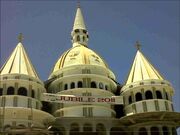
Premier L'eglise Baptiste Des Gonaïves
There are nearly113 places of worship representing various faiths within this community. These include Catholic, Episcopal, Baptist, Adventist, Pentecostal, Churches of God, Wesleyans, and Jehovah's Witness denominations.
Organizations
In the commune of Gonaïves, there were eight political parties, six grassroots organizations, two peasant groups, three women's groups and an international organization counted.
Communication
In the realm of communication, seven radio stations, two newspapers/magazines, and three television stations were noted.
Leisure
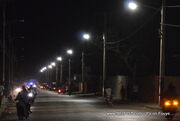
Gonaives street at night
The town is adequately equipped when it comes to leisure activities. There are 23 gagueres available. In terms of entertainment venues, there are two theaters, a soccer pitch, and five volleyball courts (mostly located at schools within the city). Additionally, there are eight night clubs. As for cultural heritage, the commune boasts five monuments and sites. It is worth mentioning that Gonaïves's attractions are well-known, both within the country and internationally. In the realm of musical performances, there are sporadic groups that exist. The Kind Branch of Geffrard and St Rose are the two oldest carnival groups in the city of Gonaïves.
Sport[]
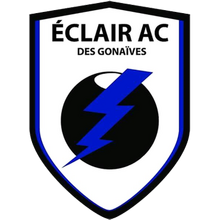
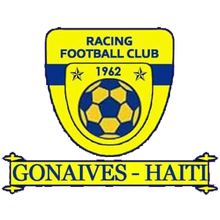
Sténio Vincent Park, also known as Parc-Vincent, and the Morne Blanc sports center serve as the venues for various sports clubs from Gonaïves, including Racing Football Club and Eclair Athletic Club, to host teams from other cities in the country. Currently, Gonaives is represented by the two teams Eclair and Racing in the national first division tournament. Eclair Athletic Club earned promotion to the first division of the national championship in late 2017 after spending nearly a decade in the lower division. Racing Football Club, after winning the national championship in 1988 as the Red Eagle, secured their first national title on December 24, 2008, just a few months after the city was hit by hurricanes Hanna and Ike. On May 29, 2016, the team claimed their second national title by defeating Football Inter Club Association (FCIA) with a goal from Stevenson Guillaume in the 52nd minute of the final match at Morne Blanc sports center, also known as Miguel St. John Park. This second title was achieved without a single defeat at Parc Miguel Saint-Jean, the team's home ground since its inauguration. The 2016 season was remarkable for Racing as they also clinched the championship title, once again defeating FICA with another goal from Guillaume, who was also a member of the national under-20 team. With their second title, the Gonaives-based club qualified for the CONCACAF Champions League in 2017 and secured the only available spot in their group for the second phase of the competition.
Places and monuments[]
- The cathedral Saint-Charles-Borromée
- The port of Gonaïves was once used to ship agricultural products from the Artibonite plain such as coffee, rice, cotton, sugar cane and guaiac wood. Around the harbor, the fishing village with its alignment of "boat-country" and the construction of lobster traps.
- The Vodun Sanctuaries of Gonaïves
Vodun sanctuaries in the region of Gonaïves where great ceremonies are held dedicated to the spirits of the royal family of Dahomey; songs, dances, sacrifices of oxen and goats are in the game.
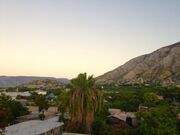
Goniaves
Neighborhoods[]
| GON | Gonaïves | 356,324 | ||||
|---|---|---|---|---|---|---|
| VGV | Ville des Gonaïves | Urban | 278,584 | |||
| QPB | Quartier Petite Rivière de Bayonnais | Urban | 2,496 | |||
| PTM | 1ère Section Pont Tamarin | Urban Rural
Total |
190,34917,809
208,158 |
Aufilier, Bélance, Bigot, Bois Marchand, Bongris, Cadet, Casoleil, Chatelain, Cocherel, Déronville, Des Cahos, Descordes, Desmurailles, Dessources, Dolant, Gatereau, Georges, Grammon, Guimbi, Jacquet, Les Dattes, Le Tiro, Mandrin, Marotte, Nandrin, Nan Piquet, Savane-Désolée, Savane-Jong, Souvenance, Tarras, Terre-Salée, Ti Coupe-Nandrin, Trois-Ponts, Yon | ||
| BSS | 2ème Section Bassin | Urban Rural
Total |
28,23511,199
17,809 |
Bassin, Carrefour Coutant, Carrefour Joffre, Colonne, Décossière, Dédin, Désiré, Duclerac, Fond Grangeur, Grande-Savane, Jean-Jules, Laferrière, La Hatte-Rocher, Lano, La Pierre, Mare-Colas, Marose, Mataka, Michel, Morin, Nan Chame, Nan Sedren, Odino, Phaeton, Ramper, Vieux Cabrouet. | ||
| PRB | 3ème Section Petite-Rivière-de-Bayonnais | Urban Rural
Total |
2,49620,654
23,150 |
Annivert, Barrade, Batardo, Bayonnais, Bois Saint-Martin, Bouilli, Cachotte, Ca Lacoupe, Canalle, Castor, Champelot, Chapelet, Chapelle, Cilo, Clavin, Coquillot, Croissy, Danache, Descodes, Docine, Fond-la Coupe, Fond-Morel, Forestier, Foucade, Gasse, Grande-Source, Guibert, Guimbi, Jean Charles, Jean-Nite, Lacet, La Couleuvre, La Coupe Pintade, Lagon-Bazile, La Source, Laurent, Margot, Medecignin, Odigé, Oranger, Petite Rivière Bayonnais, Phaeton, Saint-Martin, Sarazin, Saut-d'Eau, Savane-Pangnol, Savane-Ronde, Seguin, Terre-Rouge, Ti Coupe | ||
| POX | 4ème Section Poteaux | Rural | 14,949 | André, Badon-Marchan, Bois Boulé, Brésson, Chevalier, Coutant, Derrière-l'Etang, Deux-Barrières, Dubedou, Duquesnin, Funel, La Coupe, Les Poteaux, Madame-Charle, Mapou, Prunelle, Sanse, Terre-Blanche, Terre-Sonnain, Tête Canal. | ||
| LAB | 5eme Section Labranle | Rural | 10,633 | Auguste, Bassin-Figuier, Bauvrai, Bodin, Bois Pin, Boulaile, Brunette, Cadette, Calebassier, Ca Robert, Castanette, Corossol, Couveret, Derrière-Morne, Dolant, Doucement, Dubois, Duperrier, Fond-Chatelin, Fond-Nicole, Fond-Sanse, Gouillomet, Gounotte, Guillaume, Imbo, Jean-Noel, Jean-Pierre, Mare-Printemps, Maro, Mérac, Nan Bois, Ramier, Roche-Plate, Vedrine. |
Sources[]
Livelihood Profiles [1] Michael Vedrine




